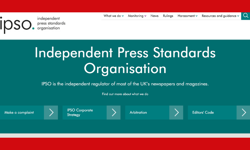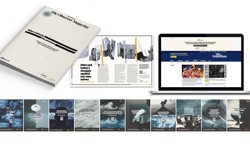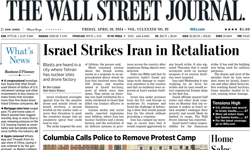
A quick perusal of media stories on just one recent day provided a scary outlook for the future of the regional press.
“Newspaper to go online-only after 139 years in print”, screamed one digital headline, referring to the South Yorkshire Times.
“Union condemns lack of action over newspaper closures”, yelled another, the competition authorities getting a kicking for “ignoring” a claimed monopoly caused by Trinity Mirror’s closure of the Northants Herald & Post, Luton on Sunday and the Milton Keynes-based OneMK.
And “Brighton Argus editor departs, but does Newsquest really care?”, opined a third headline, marking how one of the industry’s most experienced editors has departed an ailing daily newspaper.
All three stories reflect a common theme of print closures, cuts and ruthless publishers.
Now let’s play the same game on a different day, but this time, let’s select stories with an alternative flavour.
“Metro climbs to second place in the circulation league”, says one headline, telling how the printed paper given away in many British cities has now overtaken the national Daily Mail, and is within 88,000 copies of reaching The Sun’s sales.
“Newsquest donates more than £300,000 to charitable causes”, explains another, describing how the American-owned regional publisher is supporting numerous local communities where it publishes.
And how about this one: “Innovative new publisher launches 50 local digital newspapers across UK and new title focusing on Brexit”, extolling the activity of Newsdit, the digital publisher, news aggregator and social network.
So now we’ve got growing regional appetites for print, publishers caring for communities, and an expanding digital business venture.
What media coverage is telling us is: “Guess what? More papers will close, merge or migrate in 2017, more traditional journalists’ jobs will disappear, and some isolated areas might lose print altogether.”
But it’s also telling us: “The regional publishing world is showing glimmers of hope.”
Free newspapers: Metro has shown us the way. The London Evening Standard quickly turned a sub-250,000 and plummeting sale into a 900,000-plus free circulation, increasing profitability along the way. Watch closely to see which big city paper might be next.
Meanwhile, it’s fascinating to see a regional publisher give hard-earned cash away to local charities. They wouldn’t do this unless they knew audiences were still there to be nurtured.
And for every print closure, we’ll continue to see at least one digital news brand launched. Take a look at www.localweblist.net, which constantly locates and counts the UK’s growing network of ‘hyperlocal’ websites. As I type, there are 553 such sites – for England alone.
Some will be short-term, many will fail, but others will succeed. The regional publishers of the future will be the ones that do the best research, spotting and investing in the greatest new ideas.










